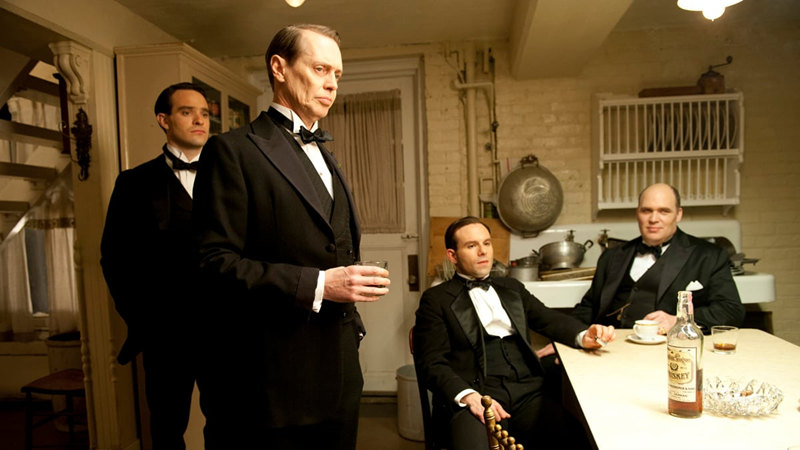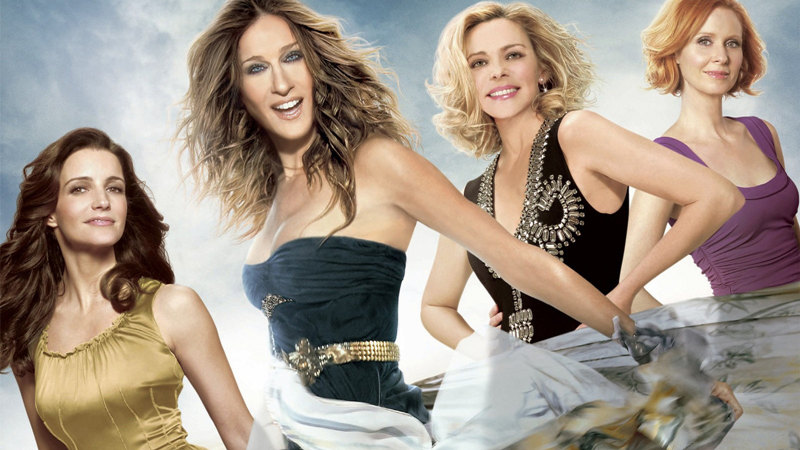American audiences (and most others too, I suspect) have probably seen as many “revisionist” samurai films as classical ones, so de-romanticized portraits that undercut the myth of the honorable warrior are hardly surprising. But Hideo Gosha’s “Three Outlaw Samurai” (1964) seems more jaundiced than most, not necessarily in its depiction of its three protagonists who, warts and all, turn out to be fairly likable, but in the way it depicts the supposedly rigidly structured society of feudal Japan as a house of cards built on a pit of quicksand in the middle of a swamp sloshing on top of a fault line. Loyalty seems irrelevant in a world of constantly shifting power dynamics and ephemeral allegiances that aren’t even defined by family, let alone caste. It’s every man for himself and if there’s a God, he’s surely against all.
The instant you understand the situation in Gosha’s hardscrabble world, you’re already behind the changing times. In the opening scene, wandering samurai Sakon Shiba (Tetsuro Tamba), whose muddy sandals initially get more privileged treatment than his face, stumbles into a barn where three grubby peasants have a woman tied to a post, and a sword held to her throat. Before Shiba can teach these cowards the meaning of justice, he learns that they have kidnapped the magistrate’s daughter because they can think of no other way to force him to listen to their petition for fair treatment. He needs a good place to sleep, so he winds up on their side, but if it had been a little earlier in the day, he might have just moved on.
Sympathies shift even faster when vagabond samurai Kyojuro Sakura (Isamu Nagato) enters the scene. He is freed from jail by the magistrate to kill the peasants that Shiba now protects. Along the way, he casually slices and dices a man who launches a surprise attack on him – he does not dispatch the man out of any sense of malice and takes no pleasure in it. It simply had to be done. As the battle with the peasants is about to start, Shiba gives Sakura the lowdown, and he switches immediately, which delays the looming fight since the magistrate’s forces now have to group. Sakura soon falls for a recently widowed woman. Very recently widowed. It seems her husband thought it was a good idea to launch surprise attacks against approaching samurai.
The slightly dandified Kikyo (Mikijiro Hira) makes it three. He happily admits to sponging off the magistrate, and though he has no stomach for real work, he’s willing to follow orders and see a lot of innocent people die if need be. He only switches sides when he realizes his boss is, in the parlance of the times, a giant tool, something that the magistrate’s daughter, once returned by her kidnappers, figures out as well.
Shiba is the most overtly heroic of the bunch, but his considerable personal sacrifices are completed wasted in Gosha’s uncaring universe. It’s not that no good deed goes unpunished, just that good deeds, like bad ones, are most likely to go for naught. Shiba’s protection proves inadequate in the face of the magistrate’s superior forces, and the peasants remaining by the end of the film are hardly inspired by any of the samurais’ feats of bravery. They’d rather grovel in misery than risk life and limb for justice, and considering what’s just happened, it’s hard to blame them. The only reward anyone can reasonably hope for is to still be alive by the end of the film, just the same as they would have been if they had not gotten involved in the first place.
Gosha’s wide-screen compositions (cinematography by Tadashi Sakai) are dynamic and at their most luminous when they are also at their grungiest. The fights are carefully choreographed, but not as balletic as in many samurai films. They are quick, close-quarter messes, and, much like Spielberg, Gosha knows just when to cut away from the main action to delay a payoff, or even to redirect the viewer’s attention entirely.
Gosha had originally directed the Three Outlaw Samurai on television, where he first learned his craft, and their transition to the big screen, also Gosha’s debut feature, was a successful one. He went on to become one of the more popular chanbara (swordplay) filmmakers of the next few decades, and also made his mark in the yakuza genre. His second film, “Sword of the Beast” (1965), is also in the Criterion collection. Since these are the only two Gosha features I’ve seen, I’m hardly qualified to assess whether they are among his best, but “Three Outlaw Samurai” was certainly a fine way to kick off a film career.
Video:
The film is presented in its original 2.35:1 aspect ratio. Considering this is almost a bare-bones release, it is perhaps mildly surprising that the 1080p transfer is strong even by Criterion standards. The source print must have been well-maintained because this high-def transfer shows off a rich black-and-white image with sharp detail and strong contrast throughout. Virtually no signs of damage are apparent. Detail in close-ups is excellent. This is a superb transfer.
Audio:
The LPCM Mono audio doesn’t demonstrate much depth, but the sound design for this film is strictly functional. The audio mix is clean with no obvious distortion. Optional English subtitles support the Japanese audio.
Extras:
The only extra is a Trailer, but the insert booklet includes an excellent essay by critic Bilge Ebiri, who provides an overview of Gosha’s career in addition to an analysis of the film. It’s been great to see Criterion essays from Kim Morgan and Bilge Ebiri in the last few months, and I hope we hear more from both of them.
Film Value:
This is as bare-bones as an official Criterion release gets, but Gosha’s debut feature certainly doesn’t disappoint.


